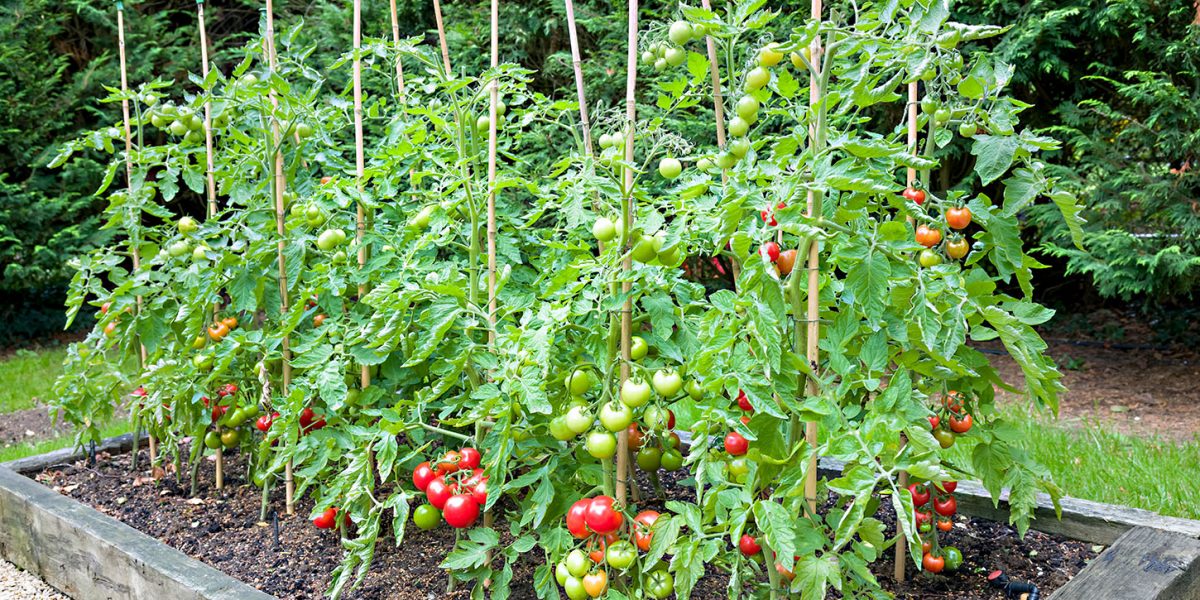Growing tomatoes in your yard is not only a fun activity but also a rewarding one. Watching the plants grow and bear fruit brings personal satisfaction. Besides, you can enjoy fresh, homegrown tomatoes right from your garden. This activity also encourages a closer connection with nature while offering healthy, delicious produce for your family to consume.
In this article, we will guide you through the essential steps of planting and caring for tomato plants. From selecting the right seeds to ensuring proper watering and fertilizing techniques, every step matters. By following this guide, you’ll be on your way to a successful and plentiful harvest. Let’s start this thrilling adventure of cultivating tomatoes together!

Selecting the Appropriate Tomato Variety
Choosing the right tomato variety is a very important first step in the process of growing tomatoes in your yard. There are many types of tomatoes available, each with unique characteristics and different care needs. Some factors to consider when choosing a tomato variety include fruit size, flavor, disease resistance, and suitability to the local climate.
Popular tomato varieties to grow in your yard include Roma, Cherry, Beefsteak, and Heirloom. Roma is a good choice for sauces and pastas, Cherry is ideal for salads, Beefsteak is great for sandwiches, while Heirloom offers a unique and diverse flavor. Also consider whether you want to plant a determinate variety that grows compactly or an indeterminate that continues to bloom throughout the season.
Soil Preparation and Growing Medium
Before planting tomatoes, prepare the land or planting container well. If planting directly in the ground, choose a location that gets full sunlight for at least 6-8 hours a day. Make sure the soil has good drainage to prevent waterlogging that can damage the plant’s roots. Incorporate compost or organic fertilizer to enhance soil fertility and improve its texture.
If you choose to plant tomatoes in pots or containers, use a pot with a diameter of at least 40 cm and a depth of 45 cm for each plant. Choose a planting medium consisting of a mixture of soil, compost, and rice husks or cocopeat in a ratio of 1:1:1. This planting medium will provide sufficient nutrients and ensure good drainage for optimal growth of your tomato plants.
Proper Planting Techniques
After land preparation or planting media is complete, it’s time to plant tomato seedlings. If you start from seeds, sow tomato seeds in seedling trays or small pots until they grow 2-3 true leaves. Transplant the seedlings to their permanent planting location when they are 10-15 cm tall. Dig a planting hole that is deep enough, about two-thirds the height of the seedlings.
Plant the tomato seedlings deeper than they were in the seedling pot. This will encourage stronger root growth along the planted stem. Make sure to plant the seedlings with sufficient distance, about 60-90 cm between plants, depending on the variety chosen. After planting, water the seedlings with sufficient water and add organic mulch around the plants to maintain soil moisture.
Routine Tomato Plant Care
Routine care is the key to success in growing tomatoes in the home garden. Regular watering is very important, especially during the early growth phase and fruit formation. Water the tomato plants deeply 2-3 times a week, depending on weather conditions and soil type. Refrain from watering the leaves directly to avoid fungal diseases.
Fertilizing is also an important part of tomato plant care. Apply organic fertilizer or compost every 3-4 weeks to ensure adequate nutrient supply. Use fertilizer with high phosphorus and potassium content to encourage flowering and fruit formation. Don’t forget to prune water shoots regularly to direct the plant’s energy towards fruit production.
Pest and Disease Control
Although tomatoes are relatively easy to grow, they are still susceptible to a variety of pests and diseases. Regular monitoring is essential to detect problems early. Common pests that attack tomato plants include aphids, fruitworms, and whiteflies. To control them, use organic methods such as spraying with soap solution or neem oil.
Diseases that commonly attack tomatoes include leaf blight, fusarium wilt, and bacterial spot. Good cultural practices such as crop rotation, tool sanitation, and selecting disease-resistant varieties can help prevent infection. If an infestation does occur, immediately isolate the infected plants and use organic fungicides if necessary. Remember, prevention is always better than cure when it comes to managing tomato pests and diseases.
Closing
Growing tomatoes in your yard can be a truly enriching experience. With proper care and attention, you’ll not only cultivate a beautiful garden but also enjoy the rewards of fresh, delicious tomatoes right at your table. By following the steps outlined in this guide, you can ensure a fruitful harvest and foster a deeper appreciation for the gardening process.
Remember that patience and dedication are key to successful tomato gardening. As you nurture your plants, take the time to observe their growth and learn from any challenges you encounter. Whether you’re a beginner or an experienced gardener, the joy of harvesting your homegrown tomatoes will always be a delightful reward. Happy gardening!